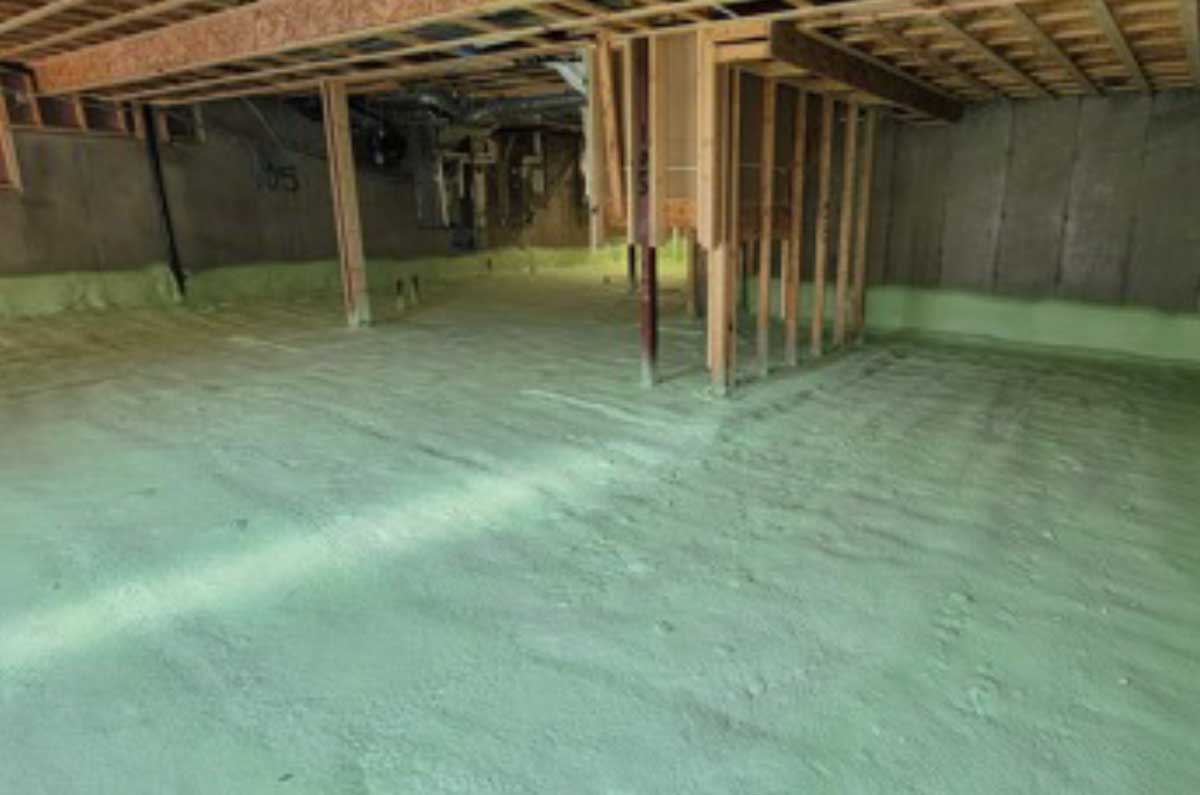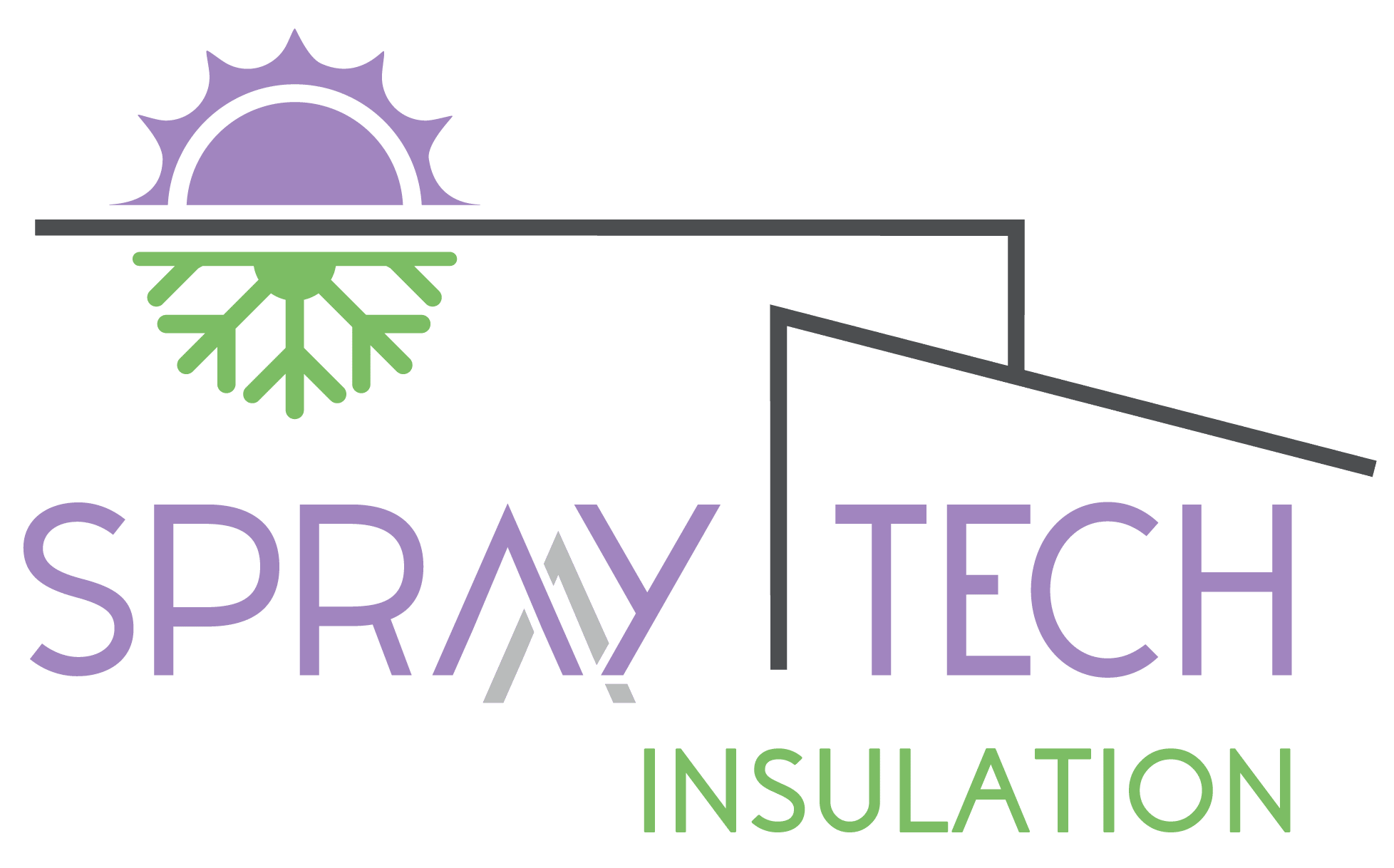
Choosing the right insulation for your basement is crucial for maintaining a comfortable and energy-efficient home. Basements present unique challenges due to their below-grade location and potential moisture issues. The best basement insulation is typically closed-cell spray foam as they provide excellent moisture resistance and high R-values per inch of thickness.
These insulation types create an effective vapor barrier, preventing condensation and mold growth while maximizing energy efficiency. Proper insulation can lead to significant energy savings and improved comfort throughout your home.
Key Takeaways
- Closed-cell spray foam offers superior moisture resistance for basements
- Proper insulation installation is crucial for energy efficiency and moisture control
- Regular maintenance and addressing water issues are essential for long-term insulation performance
Understanding Basement Insulation
Proper basement insulation is crucial for maintaining a comfortable and energy-efficient home. It helps regulate temperature, prevent moisture issues, and reduce energy costs. The right insulation approach depends on factors like climate, basement type, and local building codes.
The Purpose of Basement Insulation
Basement insulation serves multiple functions. It creates a thermal barrier, preventing heat loss in winter and heat gain in summer. This leads to improved energy efficiency and lower utility bills.
Insulation also helps control moisture, reducing the risk of mold and mildew growth. It can make basement spaces more comfortable for living or storage purposes.
In colder climates, insulation prevents frost heave by keeping the ground around the foundation from freezing. This protects the structural integrity of the home.
Insulation and R-Values Explained
R-value measures the insulation’s thermal resistance. Higher R-values indicate better insulating properties. For basements, the recommended R-value varies by region and local building codes.
R-40 to R-60 is typically recommended for attics, while basement walls may require R-10 to R-20. R-13 insulation can be suitable for basements in moderate climates but may not be sufficient in colder regions.
Insulation types for basements include:
- Fiberglass batts
- Rigid foam boards
- Spray foam
- Mineral wool
Each type has pros and cons regarding cost, installation, and performance.
The Importance of Vapor Barriers for Basement Insulation
Vapor barriers are crucial in basement insulation to control moisture movement. They prevent water vapor from penetrating the insulation and condensing, which can lead to mold growth and reduced insulation effectiveness.
In most cases, basement insulation does require a vapor barrier. The placement of the vapor barrier depends on the climate and insulation method.
For interior insulation, the vapor barrier typically goes on the warm side of the insulation. In exterior insulation applications, it’s often placed between the insulation and the foundation wall.
Proper installation of vapor barriers is critical. Gaps or improper sealing can lead to moisture problems and reduce the insulation’s effectiveness.
Types of Basement Insulation
Choosing the right insulation for your basement is crucial for energy efficiency and moisture control. Several options are available, each with unique properties and benefits for basement applications.
Spray Foam Insulation
Spray foam insulation is a top pick for basements due to its excellent air sealing and moisture resistance properties. It comes in two types: open-cell and closed-cell.
Open-cell foam is lighter and less expensive but offers lower R-value per inch. Closed-cell foam provides higher R-value and acts as a vapor barrier, making it ideal for basements.
Spray foam adheres to surfaces, filling gaps and cracks effectively. This creates a seamless barrier against air and moisture infiltration.
Professional installation is required for spray foam, which can increase costs. However, its superior performance justifies the investment, especially in damp basement environments.
Batt Insulation
Batt insulation, typically made of fiberglass or mineral wool, is a common and cost-effective option. It comes in pre-cut panels that fit between wall studs and floor joists.
While affordable and easy to install, batt insulation may not be the best choice for basements prone to moisture issues. It can absorb water, leading to mold growth and reduced effectiveness.
When using batt insulation in a basement, it’s crucial to install a proper vapor barrier on the warm side of the wall. This helps prevent moisture from penetrating the insulation.
Batt insulation is most effective in dry basements that have proper moisture control measures in place. It’s important to ensure a snug fit without compression to maintain its insulating properties.
Rigid Foam Insulation
Rigid foam insulation is also a good choice for basement walls. It comes in panels and is available in three types: extruded polystyrene (XPS), expanded polystyrene (EPS), and polyisocyanurate.
XPS offers high R-value and moisture resistance, making it well-suited for basement applications. EPS is more affordable but less moisture resistant. Polyisocyanurate provides the highest R-value per inch but is more expensive.
Rigid foam can be installed directly against concrete walls, creating a continuous insulation layer. It doesn’t absorb moisture and can act as a vapor barrier when properly sealed.
Installation requires careful attention to sealing joints and edges to prevent air and moisture infiltration. Rigid foam also provides a smooth surface for attaching drywall or other finishes.
Reflective Insulation
Reflective insulation consists of a reflective material, usually aluminum foil, attached to a backing such as polyethylene bubbles or foam board. It works by reflecting radiant heat rather than slowing conductive heat transfer.
This type of insulation is less common in basements but can be effective when used in conjunction with other insulation types. It’s particularly useful in reducing heat gain in hot climates.
Reflective insulation requires an air space to function effectively. In basements, it’s often used between floor joists or in wall cavities with an air gap.
While not a primary insulation choice for most basements, reflective insulation can complement other insulation types to enhance overall thermal performance.
Installation Tips and Considerations
Proper installation of basement insulation is crucial for maximizing energy efficiency and comfort. Key factors include choosing appropriate materials, ensuring correct placement, and addressing moisture concerns.
Insulating Basement Walls
Closed cell polyurethane spray foam is highly effective for basement walls. It provides excellent moisture resistance and insulation value. Rigid foam boards are another good option, offering high R-value per inch.
When installing, leave a gap between the insulation and foundation wall to prevent moisture issues. Apply a vapor barrier on the warm side of the wall within the first third of the insulation’s R-value.
For framed walls, use fiberglass batts or mineral wool. Ensure the cavity is filled to avoid air pockets.
Insulating Basement Ceilings
Insulating the basement ceiling is important for sound reduction between floors. Fiberglass batts or mineral wool are common choices.
For better soundproofing, consider using rigid foam boards between floor joists, followed by fiberglass batts. This combination provides excellent thermal and acoustic insulation.
Ensure proper air sealing around penetrations like pipes and electrical boxes before insulating. Use unfaced batts if a vapor barrier is present on the warm side.
Insulation Thickness and Coverage
The recommended insulation thickness depends on the material and local climate. Generally, aim for R-10 to R-20 for basement walls and R-30 to R-60 for ceilings.
For fiberglass batts, this typically means 3-6 inches for walls and 9-18 inches for ceilings. Spray foam can achieve similar R-values with less thickness.
Ensure complete coverage without gaps or compressed areas. Pay special attention to corners, edges, and areas around windows and doors.
Faced vs. Unfaced Insulation
Faced insulation has a vapor barrier attached, while unfaced does not. For basement walls, use unfaced insulation if installing a separate vapor barrier.
In ceilings, use faced insulation if there’s no existing vapor barrier on the warm side. The paper facing should always face the heated living space.
Unfaced insulation is more versatile and can be used in any orientation. It’s ideal for adding layers to existing insulation or in spaces where a vapor barrier is already present.
Special Considerations for Concrete Basement Walls
Concrete basement walls require specific insulation approaches to prevent moisture issues and maximize energy efficiency. Proper insulation techniques can significantly improve comfort and reduce heating costs in basement areas.
Insulating Concrete Walls
Rigid foam insulation panels are highly effective for concrete basement walls. They provide excellent moisture resistance and thermal performance. These panels can be mechanically fastened to the concrete surface using furring strips.
Extruded polystyrene (XPS) and polyisocyanurate are popular due to their high R-value per inch. They create a thermal barrier that helps prevent condensation on the cool concrete surface.
Spray foam insulation is another option that offers superior air-sealing properties. It can fill gaps and create a continuous insulation layer, effectively reducing heat loss and moisture penetration.
Effective Insulation Strategies
A moisture barrier is crucial when insulating concrete basement walls. This prevents water vapor from penetrating the insulation and causing mold growth.
Building a stud wall in front of the concrete and filling it with fiberglass batts is a common method. This approach allows for easy installation of electrical wiring and provides a surface for attaching drywall.
Combining rigid foam insulation with fiberglass batts can maximize thermal performance. The foam acts as a vapor barrier, while the batts provide additional R-value.
Proper air sealing around windows, pipes, and other penetrations is essential to prevent moisture issues and improve insulation effectiveness.
Maintaining Your Basement Insulation
Regular maintenance ensures your basement insulation remains effective and durable. Addressing issues promptly helps prevent moisture damage and energy loss.
Periodic Checks and Upgrades
Inspect your basement insulation annually for signs of wear or damage. Look for gaps, cracks, or areas where insulation has settled or compressed. Pay close attention to areas around windows, pipes, and electrical outlets.
Check for moisture issues by examining walls and floors for dampness or discoloration. If you notice any problems, address them immediately to prevent mold growth and insulation deterioration.
Consider upgrading your insulation if it’s outdated or inadequate. Newer insulation materials often offer better performance and energy efficiency. Consult with a professional to determine if your current insulation meets modern standards.
Keep an eye on your energy bills. If you notice a sudden increase, it could indicate insulation problems.
Combating Potential Insulation Issues
Water infiltration is a common threat to basement insulation. Ensure proper drainage around your home’s foundation to prevent water from seeping in. Install or maintain gutters and downspouts to direct water away from the house.
Address any cracks in the foundation promptly. Even small cracks can allow moisture to penetrate, compromising your insulation’s effectiveness.
Maintain a proper vapor barrier on the warm side of the wall to control moisture flow. This helps prevent condensation within the insulation, which can lead to mold growth and reduced insulation performance.
If you notice pest activity, act immediately. Rodents and insects can damage insulation and create nests within it, reducing its effectiveness.
Looking for the best insulation for your basement? Spray foam insulation stands out for its efficiency, durability, and ability to provide an airtight seal. It effectively blocks moisture and keeps your basement warm, making it the ideal choice for any home. Our team is here to guide you through the process, offering personalized solutions tailored to your specific needs. Contact us today to discover why spray foam is the top choice for basement insulation and take the first step toward a more comfortable and energy-efficient home.
continue reading

